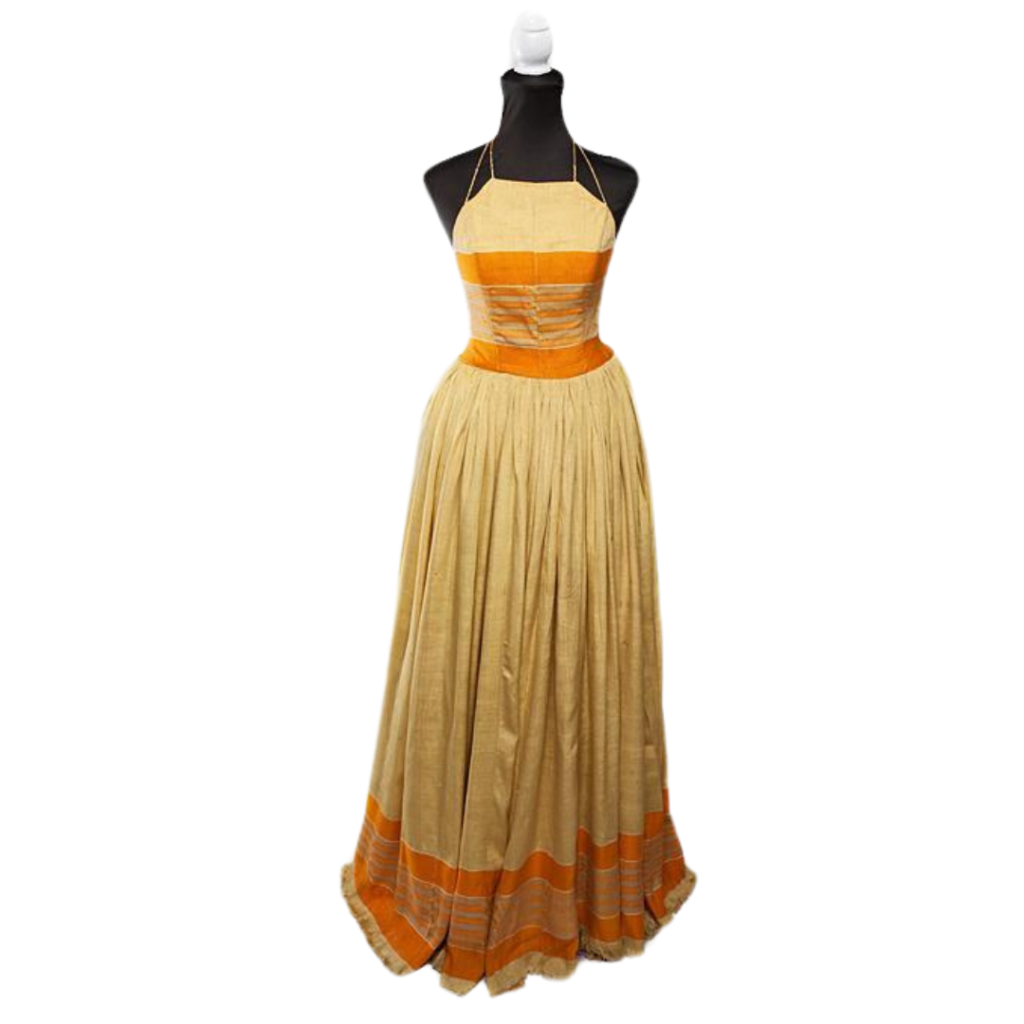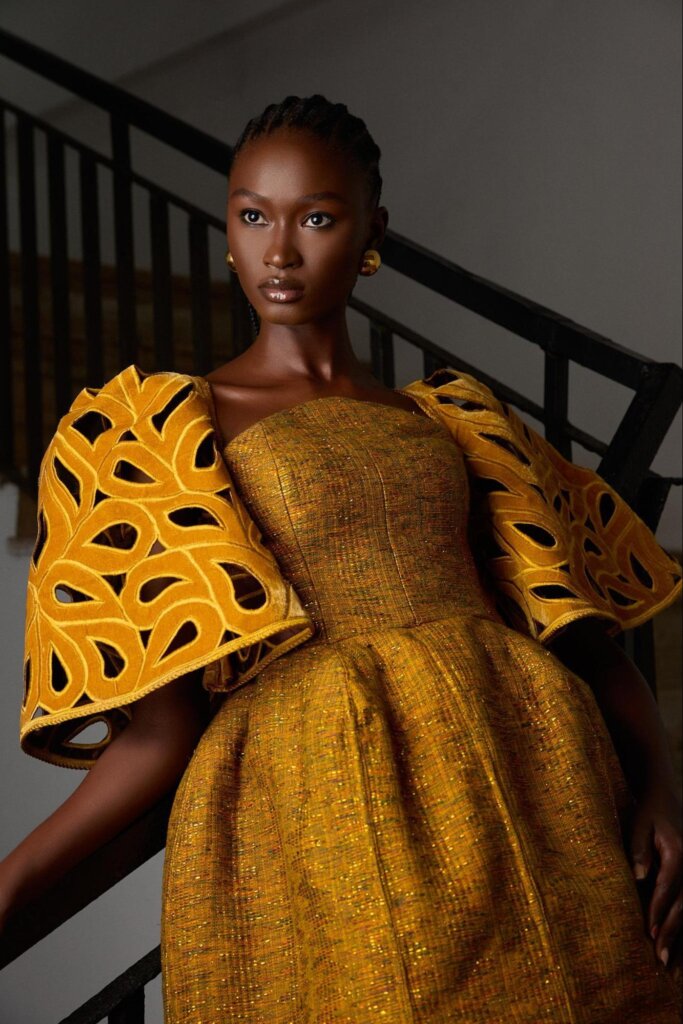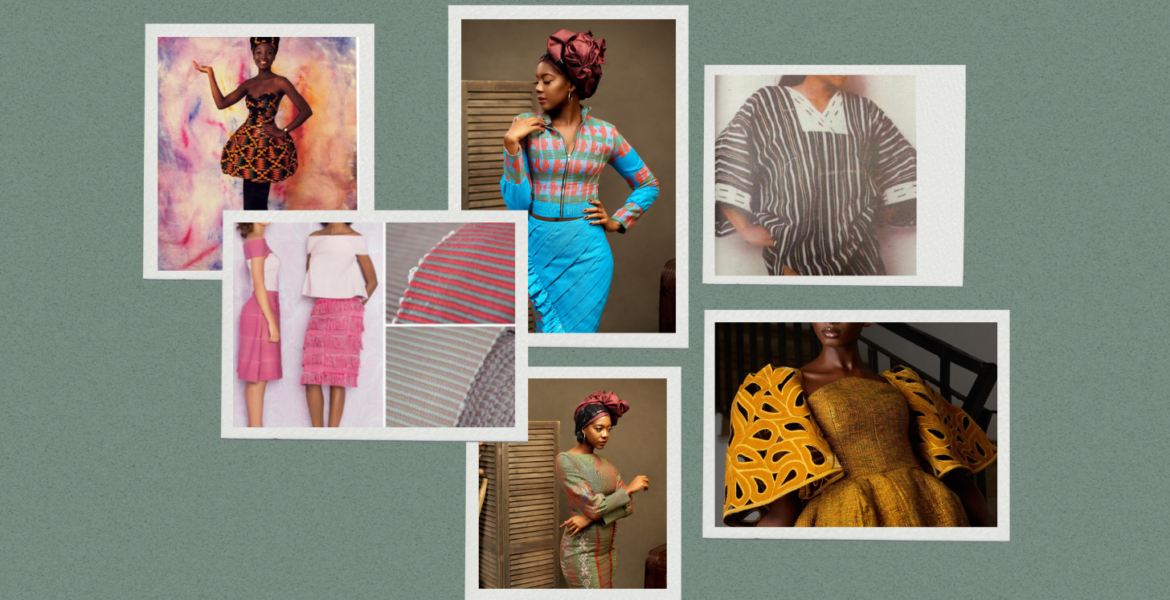“Nothing on Earth is more powerful than an idea!”
– Dr. Myles Munroe
The idea of starting a Fashion Forum was a thought that I conjured up due to the terrain of fashion in Ghana in the mid-2000s. I recall speaking with legendary Ghanaian designer Kofi Ansah, who enjoyed a long fashion career in the UK. He fully supported and encouraged the idea. Unfortunately, we didn’t get to launch it together due to his untimely death on May 3, 2014. Fashion Forum debuted in 2016 as part of civil society—the Ghana Culture Forum’s anniversary celebrations in Ghana.
Fashion Forum Africa (FFA), a pioneering NGO, is deeply immersed in celebrating and preserving Ghanaian fashion, tracing its evolution from the 20th century to the contemporary era. I’m excited to share a glimpse into our dedicated quest of chronicling the legacies of Ghana’s trailblazing designers, the intricate beauty of indigenous textiles, and the unique design ethos that defines Ghana. Our mission is to document and actively contribute to the transformative wave reshaping Ghana’s fashion industry and echoing across the continent.
Building on our unwavering commitment at Fashion Forum Africa (FFA), we recently took our mission to an international stage at the prestigious BRICS+ Fashion Summit in Moscow. This pivotal event was not just a showcase but a strategic step to draw in broader participation, support, and investment from beyond Africa’s borders. It offered us a platform to highlight the continent’s untapped potential, presenting the richness of Ghanaian fashion to a global audience. The reception was positive and affirming, echoing our belief in the boundless possibilities within Africa’s fashion landscape.
Reclaiming the narrative
For decades, the defining narrative of Ghana and its fashion has been primarily from the European perspective. The truth of our fashion history and the pioneers who shaped it is steadily either being lost or misrepresented. We are responsible for reclaiming that narrative, writing our true history, honouring the past, and creating a foundation to preserve, develop and promote our current and future fashion industry.
One prevalent misconception surrounds the origins of wax and fancy print materials, often mistakenly labelled as quintessentially African. Contrary to popular belief, these fabrics are not indigenous to Ghana or the wider African continent. Their journey began over 170 years ago, originating from the Netherlands. In an exhibition at the Elmina Java Museum, historian Ineke van Kessel unveils an intriguing backstory: Swiss missionaries first communicated the burgeoning demand for wax prints in West Africa to a Scottish trader. The reason? These imported fabrics were more conducive to sewing machines than the region’s thicker, locally woven materials. This historical insight sheds light on a significant narrative deviation – the true essence of indigenous Ghanaian and African fabrics has been overshadowed by a misconception that materials imported from Europe and China represent authentic African textiles. In truth, they do not.

FFA collaborates closely with numerous agencies within Ghana to meticulously gather comprehensive data on the materials, production processes, and sourcing methods of these indigenous textiles. Our focus is not just on the fabrics but also on the artisans behind them and their traditional production techniques. This endeavour aims to amplify the visibility and appreciation of indigenous fabrics in fashion and design, enriching the tapestry of global style with Ghanaian threads. Additionally, FFA is committed to empowering local producers and aiding them in exploring new markets and opportunities. This not only broadens the reach of their exquisite fabrics but also elevates their craftsmanship to new heights of quality and recognition.
Why documentation matters
Ghana’s indigenous textiles, such as Ewe Kete, Asante Kente, and Northern Batakari – handwoven textiles -predate the popularity of wax prints from the West and East. These textiles, made from cotton, maintain their uniqueness. Silks, particularly for Kete and Kente, elevate these textiles to haute couture and luxury. In 1997, a brilliant innovation sparked a revolution in traditional Ghanaian textiles, giving birth to Kente-oke®. With its eye-catching metallic gold specks, this unique fabric is a creative fusion of Nigeria’s Asoke and Ghana’s Kente. It’s a blend that not only unites two rich cultures but also adds a touch of luxury to the traditional weave. The launch of Kente-oke® took place at the Nigerian National Museum in Onikan, Lagos, where its first-ever production piece proudly remains on display, symbolising a milestone in African textile history. Countless other examples of innovation can be found in our history, and Fashion Forum Africa’s mission is to document and showcase these.
Through our meticulous documentation efforts, Ghana is afforded much more than just a historical record of textile manufacturing methods. We are creating a comprehensive archive that celebrates the individuals whose ingenuity has significantly shaped the evolution of indigenous fabric production in our nation. This tribute to our unsung heroes serves as an inspirational beacon for new generations, illuminating the presence of extraordinary, inventive minds within Africa. Our endeavour goes beyond mere record-keeping; it challenges the prevailing narrative that innovation and creativity are predominantly European or Western domains. By highlighting our rich history of achievement, we aim to reignite a sense of pride and confidence in the African spirit and our inherent capabilities. In our eyes, this bolstering of self-confidence and belief in our own potential is the most profound impact of documenting these historical triumphs.

The tangible effect we are witnessing is an emerging trend among designers to incorporate indigenous fabrics into their creations, embracing African motifs, symbols, patterns, and colour palettes. An African essence is increasingly woven into designs as diverse African processes are integrated with newfound confidence. While imported materials continue to play a significant role, they are no longer the exclusive choice. From our perspective, the dial is shifting.
DUABA SERWA’s S/S17 COLLECTION “A KENTE STORY” collection celebrated in a transformational way everything alluring and distinctive about Kente fused with embroidery, Swarovski crystals and African style. The collection presented a lighter, more versatile take on kente, demonstrating pure visual artistry.
CHRISTIE BROWN’s Fall/Winter 2023 Collection showcases Kente in authentic, pure cotton, breathing new life into traditional textiles. This transformation turns Kente into modern heirloom pieces, from elegant dresses to contemporary clothing.

This documentation serves as a valuable resource for aspiring designers and fashion students. By educating Ghana’s next generation on our fashion, indigenous textiles, and design history, we’re making these insights more accessible than ever. This knowledge empowers future creators to innovate with traditional materials in their work while also offering international manufacturers more effortless access to these indigenous resources. As a result, it paves the way for broader adoption by designers worldwide, opening up international avenues for our native materials.
Innovating with textiles
These textiles open up exciting possibilities for innovation across fashion, children’s wear, loungewear, accessories, and home decor. Ghana is home to organic and sustainable fabrics suited for every season. Its wealth of traditional hand-woven and printed materials, such as Adinkra Cloth and Indigo, highlights the country’s deep-rooted textile legacy. And when you expand the lens to include the broader African context, the potential becomes even more vast.
Ghana’s textile and apparel sector shows undeniable potential, underscored by the significant volume of goods smuggled into the country, indicating robust market demand. This sector, a vital part of the local economy in the 1970s, could see revitalisation through strategic partnerships, both regional and global. The Ghanaian government’s “One District, One Factory” initiative, aimed at bolstering local industry and industrialisation, positions textiles as a key area for development.
Investing in cotton growers and natural dye farmers and promoting organic fibres within agriculture are crucial to amplifying this growth. Such investments will support the textile and fashion industries and align with sustainable practices. Collaborative efforts, significantly leveraging the “One District, One Factory” policy, can catalyse the fashion industry’s expansion, showcasing Ghana’s capacity to emerge as a leader in this sector.
Fashion Forum Africa isn’t the only one documenting African Fashion.
FFA has collaborated with the Victoria and Albert (V&A) Museum in London in their desire to bring the Africa Fashion Exhibition to life. The international tour began in London and moved to the Brooklyn Museum before its current home at the Portland Art Museum. Before this, the overall launch of the V&A Museum’s Africa Fashion Exhibition opened at its Kensington site. Kofi Ansah’s presence in that exhibition is, in large part, due to FFA’s efforts.
Fashion Forum Africa actively preserves Africa’s fashion legacy, advocates for policies, and fosters education. Unlike the well-established fashion seasons in the Global North, Africa has yet to conform to a structured calendar. This, however, is not a limitation but an opportunity. Collaborations and a vision for a new fashion calendar with BRICS nations aim to redefine fashion seasons and celebrate diversity. It also allows us to educate a wider audience and increase their awareness of the intricacies of African fashion.
We’re experiencing a revitalising cycle, a renaissance, if you will, of our indigenous fabrics. Enhanced documentation and understanding will deepen our appreciation and pave the way for their increased utilisation. As we embrace these traditional textiles more wholeheartedly, we’ll spark innovations that align these age-old materials with contemporary needs and aesthetics. Such innovative applications will attract significant investments in our native methods and materials, catalysing a robust industry centred on our own rich textile heritage. This virtuous cycle promises to elevate our indigenous fabrics to new heights of recognition and value.
Inherent and unique to African textiles is the use of sustainable materials. Africa can and should claim a lead in this regard. Almost all of our textiles are made from sustainable materials that are naturally occurring and biodegradable. This is the single most significant contribution the greater use of African indigenous materials can bring to the world. We should be bold in making this known.
Image 1 – ArtDress Shirt, Kofi Ansah Ewe Kete Collection Jacket. Wogagba Rainbow design by master weaver George Ashiagbo ,( 2012) Photographer ©️2020 Eric Don-Arthur @captureghana | Image 2 – Kente Designs (1995) Photo Joyce Ababio Archives | Image 3 – St Ossei (1997) Batakari Dress, Photo The Sunday Mirror; Daily Graphic Archives | Image 4 – Raffia, (2015) High Quality handwoven Cotton Fabric “Gonja Cloth” (Batakari) – Photo Madonna Kendona Archives
Designers embracing the cause.
Ghana’s textile heritage, including materials such as Ewe Kete, Asante Kente, Northern Batakari cloth, and others, reflects the country’s cultural richness. Some of Ghana’s Iconic designers who paved the way and innovated the use of these materials within Contemporary fashion include:
CHEZ JULIE
Designer Juliana Miranda Norley Kweifio-Okai (nee Norteye), popularly referred to as “The Girl with Ambition ” rose from a ministry clerk to dressmaker to fashion icon. She founded the fashion brand “Chez Julie” in 1960. Juliana, a trailblazer in Ghana’s fashion landscape, is the country’s inaugural designer trained in Paris at the prestigious and historic Ecole Guerre Lavigne—later rechristened as ESMOD/ISEM Paris. During the vibrant highlife era under Nkrumah’s post-colonial administration, Juliana emerged as a pioneering influencer. She skillfully blended traditional African attire with contemporary European trends, crafting a unique and transformative style that resonated with the optimism and innovation of the times.
ST OSSEI & BRASS
Ricci Ossei, aka Saint Ossei, was an eclectic fashion designer who influenced and unapologetically impacted Ghanaian society with his passion and viewpoints for Ghana and Africa through music, design, art, culture and theatre. His garments and shows were designed in his studio in Ghana and made in select fabric mills and factories internationally. He also used locally sourced Ghanaian fabrics for his extensive collection to stimulate business for Ghanaian cloth producers.
ART DRESS
Kofi Ansah, the visionary behind the Art Dress fashion brand and a trailblazer in African Couture, founded the Federation of African Creators. His designs beautifully encapsulated the sophistication and charm of Ghanaian culture, masterfully blending quilting, embroidery, and appliqués. Ansah recognised Ghana’s capacity to significantly impact the global Ready-to-Wear fashion scene. He was dedicated to guiding Ghanaian creatives towards pioneering a trend that proudly boasted “Made in Africa” attire, thereby carving out a unique niche in the international fashion marketplace.
KENTE DESIGNS
Joyce Ababio is renowned for innovating Kente cloth with a distinct signature style of patterns and colours that reflected a modern yet vintage look that the younger and older generations embraced. The designer of choice for bridal and evening wear.
Fashion events like Glitz Africa Fashion Week, Mercedes Benz Fashion Week, and Rhythms on Da Runway – Accra Fashion Week showcase Ghana’s creative energy, preserving and promoting a part of Africa’s fashion legacy. In Nigeria and across Africa, fashion events like Lagos Fashion Week, Hub of Africa, Zimbabwe Fashion Week, Morocco Fashion Week, Uganda Fashion Week, Dakar Fashion Week and many others showcase the diverse talent present on the continent.
Fashion Forum Africa is crafting sustainable stories
Fashion Forum Africa stands at the forefront of preserving Africa’s fashion legacy. Beyond archiving, our mission is to advance the African fashion industry as a dialogue between tradition and innovation.
FFA continues to collaborate with institutions worldwide, including the UNESCO “The African Fashion Sector” report: Trends, challenges & opportunities for growth coming out of the data collected and analysed from the survey was launched in Lagos on October 26, 2023, by the UNESCO Director-General Madam Audrey Azoulay during the prestigious Lagos Fashion Week.
With a majority youth population of 1.4 billion, Africa holds immense potential. While challenges such as infrastructure, technology, and talent pool development persist, opportunities abound.
In a Survey that we conducted recently, Ghanaian designers expressed a solid motivation to expand globally. Key motivations are market expansion, revenue growth, increased demand, competitive advantage, product diversification, forex stability, global brand recognition, and the development of the fashion industry. Market size, cultural fit, and economic conditions play pivotal roles in influencing market selection. Growth, however, remains the objective, and the determined drive is palpable in the industry. A significant driver is the potential for higher revenues and growth opportunities beyond current market limitations. A quote from a local designer supports this,
“This offers us the potential for higher revenues and growth opportunities beyond our current market limitations.” –
UNESCO recently audited and compiled a report on the African Fashion Industry. FFA participated in the preparation of this report, which received its launch recently at the Lagos Fashion Week. There are growing connections, collaborations across borders, and a sharing of resources and methods so that we can pool our knowledge and begin to trace the manners in which, historically, fabrics, textiles, and their production methods have migrated across Africa.
Africa’s fashion industry is ready for global expansion. Fashion Forum Africa’s transformative role in preserving heritage and advocating for policies positions it as a key player. Collaborations and a vision for a new fashion calendar promise sustainable growth, cultural exchange, and global impact.
When we think of the mighty Kente and kete textiles in their authenticity, Ghanaian fashion is already imaginatively striking. If you are smart enough or like to go deep into heritage, culture and innovation, you can read the codes interwoven within each stitch, pattern, colourway and motif. If we can be bothered to decode interpretations of life in its true sense. This is striking in Ghanaian Kente and Kete styles, more so those produced pre-16th century, so well before colonialism.
Ghanaian textiles are more than mere fabric; they’re storied tapestries embedding our heritage, values, and philosophies through folklore. They reflect a journey beyond geographic borders, embodying the essence of diverse peoples and their rich narratives. Ghanaian weaves like Kente or Kete are vibrant Griots of African folklore, encapsulating wisdom and a profound oral heritage.
We invite those eager to preserve this legacy through research, documentation, archiving, and digitisation of iconic designers’ works to reach out. Join us in safeguarding our cultural narratives for future generations.









